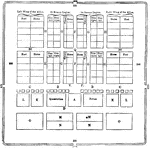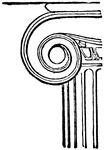
Volute of the Ionic Capital
"A kind of spiral scroll used in Ionic, Corinthian, and Composite capitals, of which it is a principal…

Volute of the Corinthian Capital
"A kind of spiral scroll used in Ionic, Corinthian, and Composite capitals, of which it is a principal…

Hemlock Water Dropwort
"Water Dropwort is a genus of plants of the natural order Umbelliferæ. A number of species are…
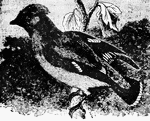
Waxwing
"The Waxwing is an insessorial bird belonging to the dentirostral section of the order. It derives its…

Whale
"Whale is a name that may be taken as equivalent to Cetacean, and applied to any member of that order…
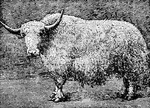
Yak
"Yak is a species of ox from the mountainous regions of Tibet. There are two races: the wild yak, generally…

Yucca
"Yucca is a genus of American plants, natural order Liliaceæ popularly known as Adam's needle.…

Superficial Muscles of the Body
"A single muscle rarely or never contracts alone, but always in harmony with a number of other muscles.…
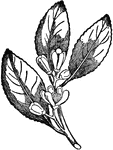
Lemon Branch
"The Lemon is the fruit of a small tree belonging to the same natural order as the orange. There are…
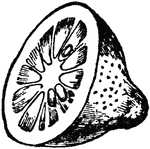
Lemon Cross-section
"The Lemon is the fruit of a small tree belonging to the same natural order as the orange. There are…
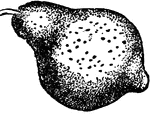
Lemon
"The Lemon is the fruit of a small tree belonging to the same natural order as the orange. There are…

Badge of the Loyal Legion
"The Military Order of the Loyal Legion is the first society formed by officers honorably discharged…

Myrtle
"Myrtle is a genus of plants, natural order Myrtaceæ, consisting of aromatic trees or shrubs,…
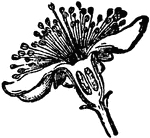
Myrtle Flower
"Myrtle is a genus of plants, natural order Myrtaceæ, consisting of aromatic trees or shrubs,…
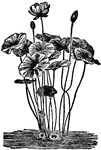
Nelumbium
"Nelumbium is the typical and only genus of the order Nelumbiaceæ. The species are remarkable…
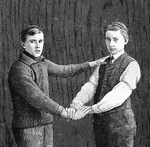
Hand seat
"Improvised Hand Seats: the Three-Handed Seat. THe usefull three-handed seat is made by one bearer grasping…

Chamaerops Humilis Palm
"Palm is a natural order of endogenous plants, the products of which are of extreme importance and utility…
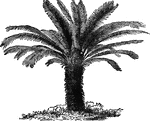
Cycas Revoluta Sago Palm
"Palm is a natural order of endogenous plants, the products of which are of extreme importance and utility…

Badge of the Order of St. Patrick
"St. Patrick, or Patricius, is the apostle or patron saint of Ireland; said to have been born near the…
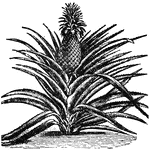
Pineapple
"Pineapple is a plant of the natural order Bromeliacæ. The flowers rise from the center of the…

Arma
"Homer describes in various passages an entire suit of armour, and we observe that it consisted of the…

Arma
"Homer describes in various passages an entire suit of armour, and we observe that it consisted of the…
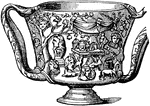
Carchesium
"A beaker or drinking-cup, which was used by the Greeks in very early times. The same term was used…
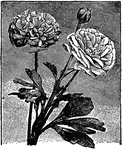
Ranunculus
"Ranunculus, buttercup, crowfoot; the typical genus of the order Ranunculaceæ. Known species about…
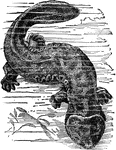
Salamander
"Salamander is a genus of reptiles closely allied to the frog, from which it differs in having an elongated…

Saturn
"Saturn is the 6th of the major planets in order of distance from the sun, and the outermost known to…

Hot Blast Smelting Furnace
"Smelting is the act or process of obtaining metal from ore by the combined action of heat, air, and…
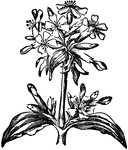
Soapwort
"Soapwort (Saponaria), a genus of plants of the natural order Caryophyllaceæ; so called because…

Spoonbill
"Spoonbill is the popular name of the birds of the genus Platalea, belonging to the heron family (Ardeidæ),…

Cestus
"The thongs or bands of leather, which were tied round the hands of boxers, in order to render their…
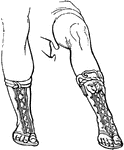
Cothurnus
"A boot. Its essential distinction was its height; it rose above the middle of the leg, so as to surround…

Thesium restored
"The Theseum is situated on a height to the north of the Areopagus, and was built to receive the bones…

Parthenon restored
"The Parthenon stood on this highest part of the Acropolis, near its centre, and probably occupied the…

Erechtheum restored
"The building of the new Erechtheum was not commenced till the Parthenon and Propylea were finished,…
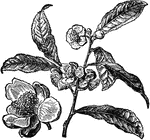
Tea Plant
"Tea is the dried leaf of an evergreen shrub of the natural order Ternstœmiaceæ. It includes the China…
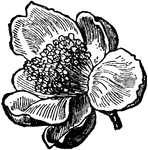
Tea Flower
"Tea is the dried leaf of an evergreen shrub of the natural order Ternstœmiaceæ. It includes…

Tea Fruit
"Tea is the dried leaf of an evergreen shrub of the natural order Ternstœmiaceæ. It includes…
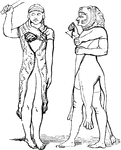
Greek soldiers
"'Exulting in the tawny covering of a she-wolf, such as his foster-parent was.' Alluding to the custom…

Eyebright
A genus of plants of natural order Scropulariaceæ. having a tubular calyx, the upper lip of the…
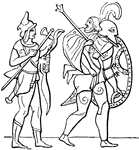
Sceptrum
"Sceptrum, which originally denoted a simple staff or walking stick, was emblematic of station and authority.…
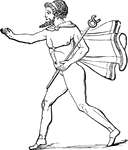
Mercury with caduceus
"Mercury, with his caduceus, summons the souls of the departed from Orcus, or the low world, as in the…

Boxer with cestus
"The cestus was used by boxers from the earliest times. It consisted of thongs of raw ox-hide, or of…
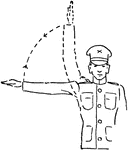
Squads Right, March
"Raise the arm laterally until horizontal; carry it to a vertical position above the head and swing…
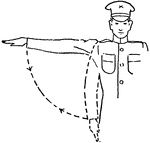
Squads Left, March
"Raise the arm laterally until horizontal; carry it downward to the side and swing it several times…

Squad Right About, March
"Extend the arm vertically above the head; carry it laterally downward to the side and swing it several…

Eyes right
At the command right, turn the head to the right oblique, eyes fixed on the line of eyes of the men…

Soldier with Rifle
"In resuming the order from any position in the manual, the motion next to the last concludes with the…
Order Arms Standing
"The butt rests evenly on the ground, barrel to the rear, toe of the butt on a line with toe of, and…

Emperor Meiji
Emperor Meiji (November 3, 1852 – July 30, 1912), or Meiji the Great, was the 122nd Emperor of Japan…

Kneel
"Kneel on right knee, sitting as nearly as possible on the right heel; left forearm across left thigh;…
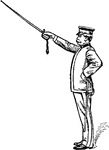
Drawn Saber
"When publishing orderes, calling the roll, etc., the saber is held suspended from the right wrist by…

Drawn Saber
"When arms are brought to the order the officers or enlisted men with the saber drawn order saber."…

Bayonet Thrust
"The force of the thrust is delivered principally with the right arm, the left being used to direct…

